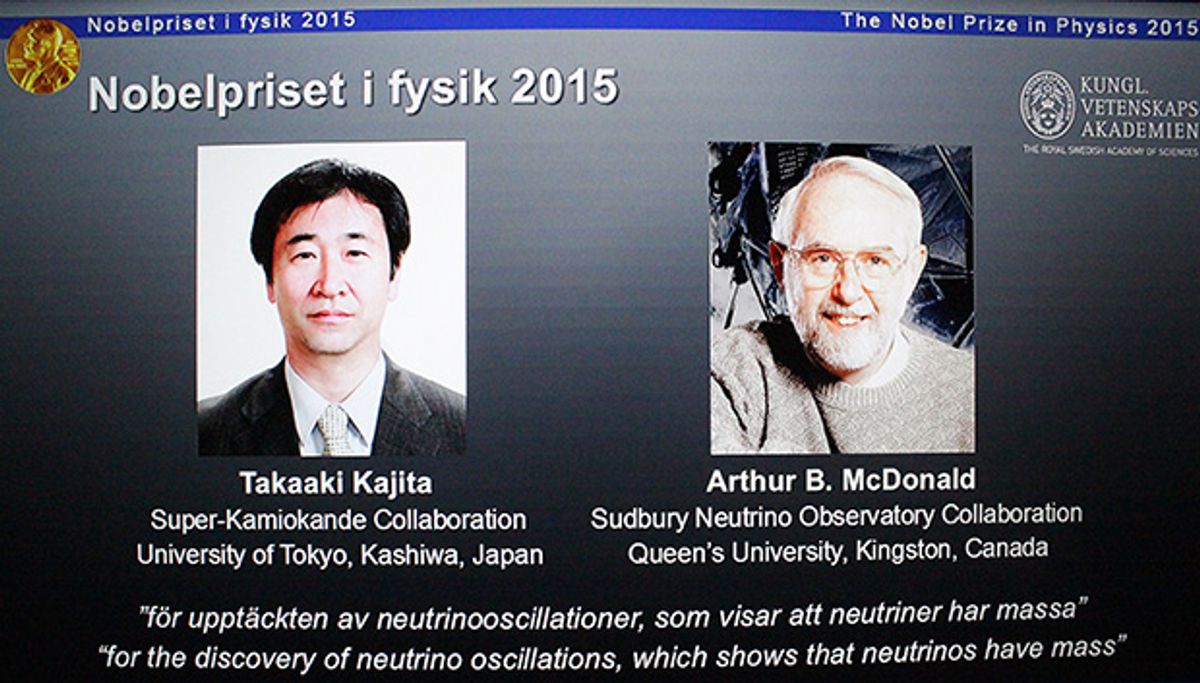A pair of scientists have been award the Nobel Prize in Physics for proving that neutrinos have mass, a discovery that could help remake the understanding of how the universe works.
Takaaki Kajita of the University of Tokyo and Arthur B. McDonald of Queens University in Kingston, Ontario, Canada won the prize, the committee said, for “the discovery of neutrino oscillations, which shows that neutrinos have mass.”
Neutrinos are tiny subatomic particles that move at nearly the speed of light and pass through almost anything without effect. To detect just a handful of the billions streaming through Earth at any given moment, scientists have built giant underground tanks, filled with tons of water and shielded from any other radiation. On the rare occasion that a neutrino strikes an atom’s nucleus, the collision produces a dim streak of light that contains information about its energy and the direction it’s traveling.
It was at Super Kamiokande, a neutrino detector built in an abandoned zinc mine in Japan, filled with 50 kilotons of purified water and lined with 13,000 photomultiplier tubes to detect the streaks of light, that Kajita collected evidence that the particles can oscillate between types. Neutrinos come in three types, known as “flavors”: electron, tau, and muon. Kajita showed in 1998 that the neutrinos created when powerful cosmic rays strike Earth’s atmosphere change flavors as they pass through the planet. Three years later, McDonald, using the Sudbury Neutrino Observatory built in a mine in Canada, showed the same thing happened with neutrinos created deep in the interior of the sun.
The Standard Model, an outline of how all the subatomic particles that make up the universe behave and interact, had held that neutrinos had no mass and therefore couldn’t change flavors. The finding that they have mass and oscillate between different states pokes a hole in that model, opening the door for physicists to come up with new explanations of how the universe works.
In a statement on the award, Roy Sambles, president of the Institute of Physics said:
The discovery of neutrino oscillation and that they have mass solves one of the longstanding problems in physics—that the Sun didn’t seem to be producing as many neutrinos as we thought it should. Now we know that they were switching between different types of neutrino. The neutrino had long been assumed to have no mass, so this one of those discoveries that’s going to change how we see the universe. It’s really quite inspiring.
Neil Savage is a freelance science and technology writer based in Lowell, Mass., and a frequent contributor to IEEE Spectrum. His topics of interest include photonics, physics, computing, materials science, and semiconductors. His most recent article, “Tiny Satellites Could Distribute Quantum Keys,” describes an experiment in which cryptographic keys were distributed from satellites released from the International Space Station. He serves on the steering committee of New England Science Writers.



